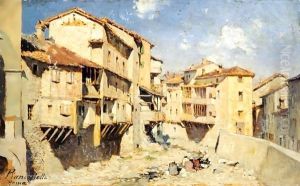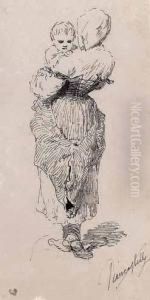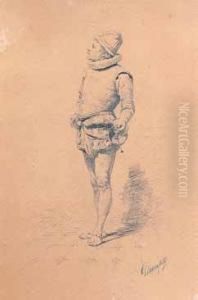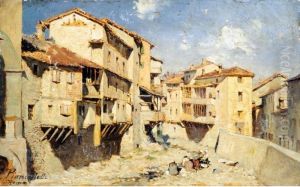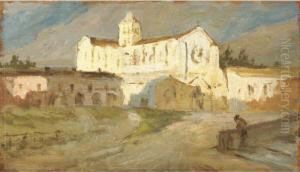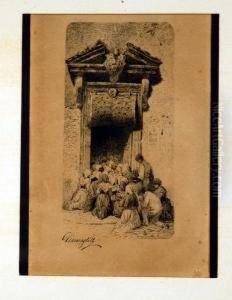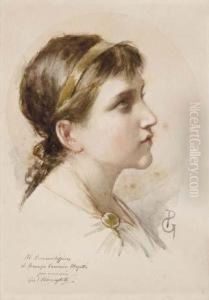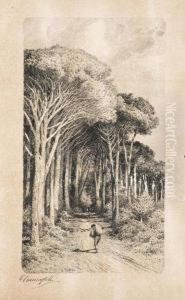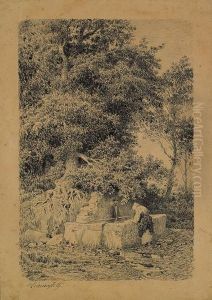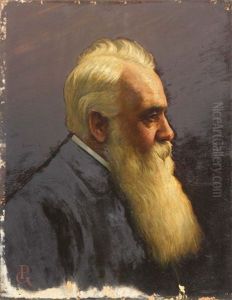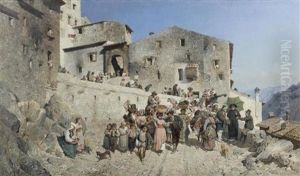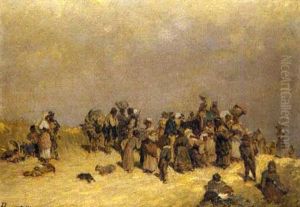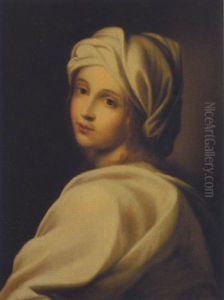Giovanni Piancastelli Paintings
Giovanni Piancastelli was an Italian artist, art collector, and curator, born on April 27, 1845, in the town of Force, near Ascoli Piceno, in the Marche region of Italy. He is perhaps best known for his role as a curator and for his contributions to the organization and enrichment of art collections, particularly the Borghese collection in Rome. Piancastelli's work as a collector and curator was informed by his background and training in the arts.
Piancastelli's artistic career was multifaceted, encompassing painting and drawing, as well as an academic interest in art history. He received his artistic training at the Academy of Fine Arts in Bologna, where he developed his skills in the traditional arts. Although less known for his own artistic creations, Piancastelli's eye for art and his skill in identifying and acquiring significant works were highly regarded.
In the late 19th century, Piancastelli became the curator of the Borghese Gallery in Rome, a position he held from 1892 until his death in 1926. During his tenure, he significantly reorganized the gallery's prestigious collection, which included masterpieces by artists such as Caravaggio, Raphael, and Titian. His efforts in cataloging and conserving the collection were instrumental in establishing the Borghese Gallery as a prominent institution for art in Italy.
Beyond his curatorial work, Giovanni Piancastelli was also engaged in scholarly activities, including research on art history and the provenance of artworks. He played a vital role in the Italian art community, advising collectors, participating in art historical debates, and contributing to the preservation of Italy's cultural heritage.
Piancastelli's legacy is not only reflected in the collections he helped to shape but also through the countless documents, drawings, and historical records he meticulously compiled. These resources continue to serve as valuable tools for art historians and researchers studying the provenance and history of European art.
Giovanni Piancastelli passed away on January 10, 1926, leaving behind a lasting impact on the art world through his dedication to the curation and study of Italian art. His work remains a significant part of Italy's cultural narrative, and his influence can still be felt in the corridors of the Borghese Gallery and beyond.
